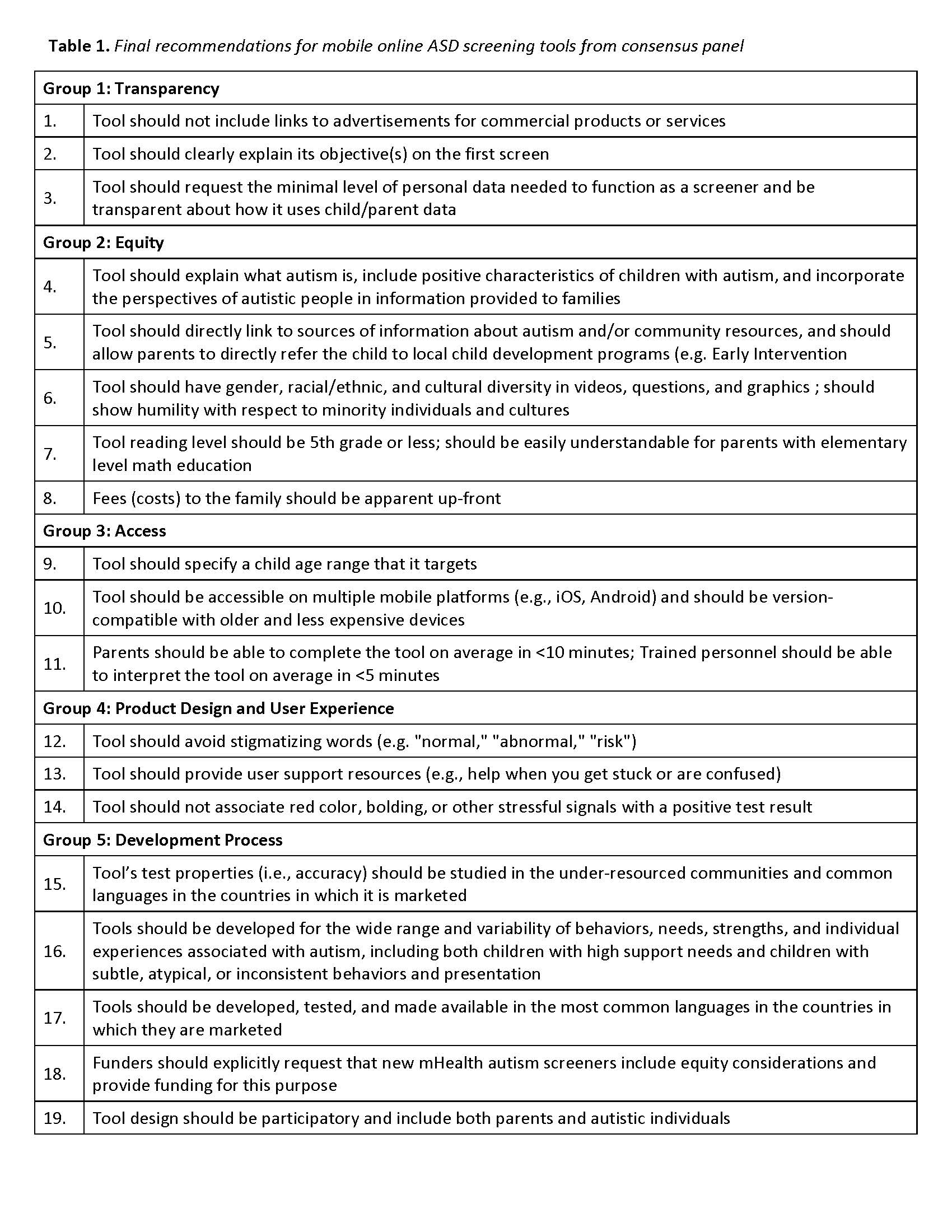Developmental and Behavioral Pediatrics
Session: Developmental and Behavioral Pediatrics 2: Autism
405 - Consensus Panel for Assessing Usability and Acceptability of Mobile Health Autism Screeners
Friday, May 3, 2024
5:15 PM - 7:15 PM ET
Poster Number: 405
Publication Number: 405.343
Publication Number: 405.343
- GT
Gabriella Tangkilisan (she/her/hers)
Intern
Doernbecher Children's Hospital at Oregon Health & Science University
Portland, Oregon, United States
Presenting Author(s)
Background: Parents who have developmental concerns about their child may find autism screening tools online. Healthcare providers may also encounter these tools in practice. Online screening tools may improve autism screening though advanced technologies and improved connection to services. However, language, cultural, and technological barriers may impede equitable access to care.
Objective: Create consensus recommendations for equitable design of autism screening apps and websites.
Design/Methods: We used consensus methodology to develop recommendations for improved online autism screening tool design. 3 pediatricians, 2 tool developers, 3 early intervention providers, 3 autistic adults, and 4 parents participated in a Modified Delphi panel. The panel included 3 asynchronous rounds of online discussion and voting using Slack (a collaborative communication software), and one live online videoconference. Participants received a multimedia summary (written summaries, videos, interactive polls) of research on screening tool usability/accessibility, and a list of 28 preliminary design recommendations from our prior research. Each round, participants provided commentary on combining or altering wording of recommendations, suggested alternative or additional recommendations, and voted for up to 10 recommendations. The recommendation list was iteratively revised and reduced. In the final round, recommendations were grouped into categories. A final consensus guideline was developed based on the vetted recommendations.
Results: The consensus panel produced 19 final recommendations (Table 1), in 5 conceptual categories: transparency, equity, access, product design and user experience, and development process. Recommendations receiving the most panelist votes overall at the end of the panel process were: “tools should directly link to sources of information about autism and/or community resources," and “tool reading level should be 5th grade or less and should be easily understandable for parents with elementary level math education.”
Conclusion(s): A multidisciplinary panel can translate research findings to actionable recommendations for equitable autism screening. Direct input from individuals impacted by current autism screening guidelines can help create guidelines that reflect stakeholder experience.

